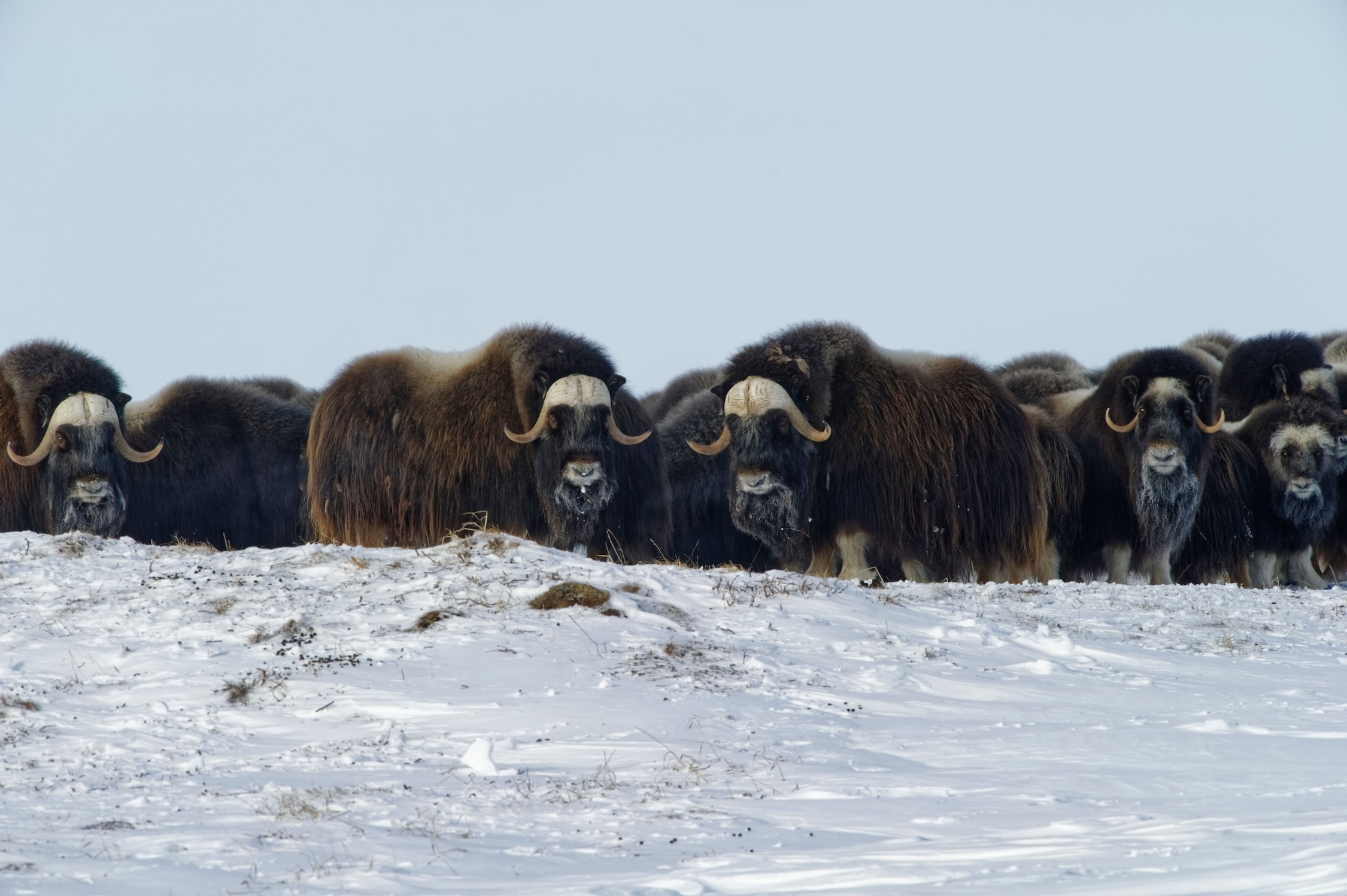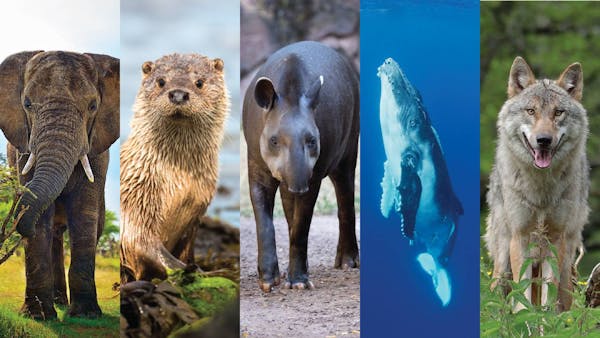Six global success stories on how rewilding key species can rebalance ecosystems
Did you know that wildlife plays a critical role in stabilizing our global climate system? Keystone species support the intricate web of life, keeping ecosystems like forests, grasslands, and oceans intact and healthy. Intact ecosystems, in turn, sequester as much as half of our carbon pollution every year.
Rewilding degraded landscapes, restoring keystone species, and conserving critical ecosystems are all essential solutions to the climate crisis.
In celebration of World Rewilding Day, here are six successful rewilding stories from around the world.
1. Eurasian beavers in the UK
The Eurasian beaver was once a common sight throughout Europe and Asia but was heavily hunted for its fur and meat. By the sixteenth century, they had become extinct in many countries, including the UK.
Efforts to reintroduce beavers to their former habitats have gained momentum in recent years. Since 2021, beavers have been reintroduced in several locations throughout the UK, including Dorset, Derbyshire, the Isle of Wight, Nottinghamshire, Montgomeryshire, and South Downs.
These reintroductions have been pivotal in restoring beaver populations and reintegrating them into their natural habitats.
The beaver's impact on its environment is significant, especially as severe weather events become more common due to the changing climate.
Beaver dams can decrease the effects of floods by up to 60 percent, reducing water flow and preventing damage to infrastructure and property.
Additionally, beaver dams capture carbon as the wetlands they create foster new plant growth in the surrounding area, forming a carbon sink.
2. Blue wildebeest in the Serengeti
The blue wildebeest (Connochaetes taurinus) is essential to the Serengeti's role as a carbon sink. However, in the mid-20th century, their population was severely reduced to just 300,000 due to viruses from livestock. This caused ground vegetation to overpopulate, leading to wildfires that destroyed up to 80% of the ecosystem annually.
As a result, the Serengeti became a net producer of greenhouse gases, releasing carbon into the atmosphere.
Efforts to manage diseases among the wildebeest population helped them recover to their historic levels of over 1.5 million in less than a decade. This successful restoration of the blue wildebeest population is considered one of the greatest conservation success stories in recent times, as it brought the Serengeti's landscape back into balance.
The ecosystem was restored, and the Serengeti became a natural storage unit for carbon once again, making the blue wildebeest's role as a key species even more critical.
3. Grey wolves in Yellowstone National Park
Yellowstone National Park is a prime example of the crucial role that wolves play in ecosystems. In 1926, the last wolf pack in Yellowstone was eliminated by park employees as part of a policy to eradicate all predators, leading to an imbalance in the entire ecosystem.
Elk populations surged, resulting in the overgrazing of willows and aspens. This loss of trees led to a decline in songbirds and the inability of beavers to build dams due to eroding riverbanks. Water temperatures also rose, which impacted cold-water fish.
In 1995, just 14 wolves were rewilded in Yellowstone, and their impact was immediate. Balanced deer and elk populations allowed overgrazed areas to recover, trees rebounded, riverbanks stabilized, and birds returned, along with other wildlife such as beavers, eagles, foxes, and badgers.
Scientists hail this as one of the greatest rewilding efforts in modern history.

Profile of a water buffalo, with an oxpecker on his nose. Image credit: © Pete Favelle | Dreamstime.jpeg
4. Water buffalo in Eastern Europe
Water buffalo (Bubalus bubalis) were once a familiar sight in many communities across Eastern Europe. However, political and industrial upheavals in the 1900s wiped out both the natural and domestic populations of this species.
Water buffaloes are adapted to wet areas and play a crucial role in creating biodiversity and abundance. They feed throughout marshes, and their large bodies create pools and puddles that provide homes for many insects, amphibians, and fish.
They are also essential seed dispersers, planting over 200 species of vegetation through their hair or droppings.
In mid-May 2021, officials released 17 water buffaloes onto the 3,500-hectare Ermakov Island on the Danube, and the number quickly rose to 18 as one of the buffaloes was pregnant. The reintroduction of this species has had a significant impact, as the entire Danube Delta quickly began thriving with life.
The water buffalo's presence restored balance to the ecosystem and created new habitats for a variety of species, making them a valuable addition to the area's biodiversity.
5. Plains bison in the American Prairie
Historically, estimates suggest that between 25 and 60 million plains bison (Bison bison bison) once roamed the American prairies. However, in the 19th century, settlers and hunters nearly drove them to extinction. The last wild bison population, about two dozen individuals, was only found in Yellowstone National Park.
Through their immense diet of grasses, bison kept the Great Plains ecosystem functioning, helping cultivate more vegetation and creating habitats for other keystone species like black-tailed prairie dogs, which serve as food for predators.
Droughts are also prone to this region, and the bison wallows create pools of water that many animals use as their primary drinking source.
Thus, in 2012, a coalition of biologists and conservationists set about to recover the plains bison. Via breeding programs, the population grew to almost 5,000. The reintroduction of bison was so successful that their impact on the landscape could be seen from space.

A herd of muskoxen withstanding the frigid winter as one. Image Credit: Wirestock, Envato Elements.
6. Muskoxen in the Arctic
While the Arctic has generally acted as a natural carbon sink for the past 10,000 years, the impact of climate change has recently seen some areas transition towards carbon source status. Herbivores, like the Arctic muskox (Ovibos moschatus), are an essential part of the ecosystem and have been found to impact the carbon cycle in the region significantly.
Well-adapted to life in the frozen north, muskoxen roam the tundra in search of roots, mosses, and lichens. In winter, they use their hooves to dig through snow to graze, while in summer, they supplement their diet with Arctic flowers and grasses.
In a study conducted by Swedish and Danish researchers in Greenland between 2011 and 2013, muskoxen were deliberately excluded from test areas by fencing. After several years, the research team observed that the removal of the muskoxen meant plants only absorbed half as much carbon during the growing season.
Around 170,000 muskoxen are currently living across the circumpolar tundra, concentrated in Greenland and Canada. With the Earth’s climate rapidly warming, their conservation is being considered in Arctic climate models.
These six stories demonstrate the power of rewilding in restoring the health of ecosystems. By bringing back keystone species and allowing natural processes to occur, we can support global biodiversity objectives, mitigate climate change, and ensure a healthier planet for all living beings.
Watch more Wild Carbon videosYou might also like
-

Celebrating unsung climate heroes: How five animals help fight climate change
African elephants, sea otters, tapirs, whales, and wolves all help fight the climate crisis by helping their ecosystems store carbon.
-
.jpg?auto=compress%2Cformat&h=600&w=600)
How restoring key wildlife species can be a game-changing climate solution
A new scientific paper shows how trophic rewilding, or reintroducing key species to restore top-down interactions, can "supercharge" ecosystem carbon sinks.
%20shutterstock_136124996.jpg?auto=compress%2Cformat&w=1200)

